Wondering how to keep your home cozy during the chilly winter months without breaking the bank? One simple solution might be right above you. Yes, we’re talking about your ceiling fan! But here’s the twist – did you know that changing the direction of your ceiling fan can actually help distribute warm air more effectively and lower your energy bills? Let’s make sure you’re getting the most out of this underrated winter ally. In this article Ceiling Fan Direction Winter we will discuss the most effective setting for your ceiling fan.
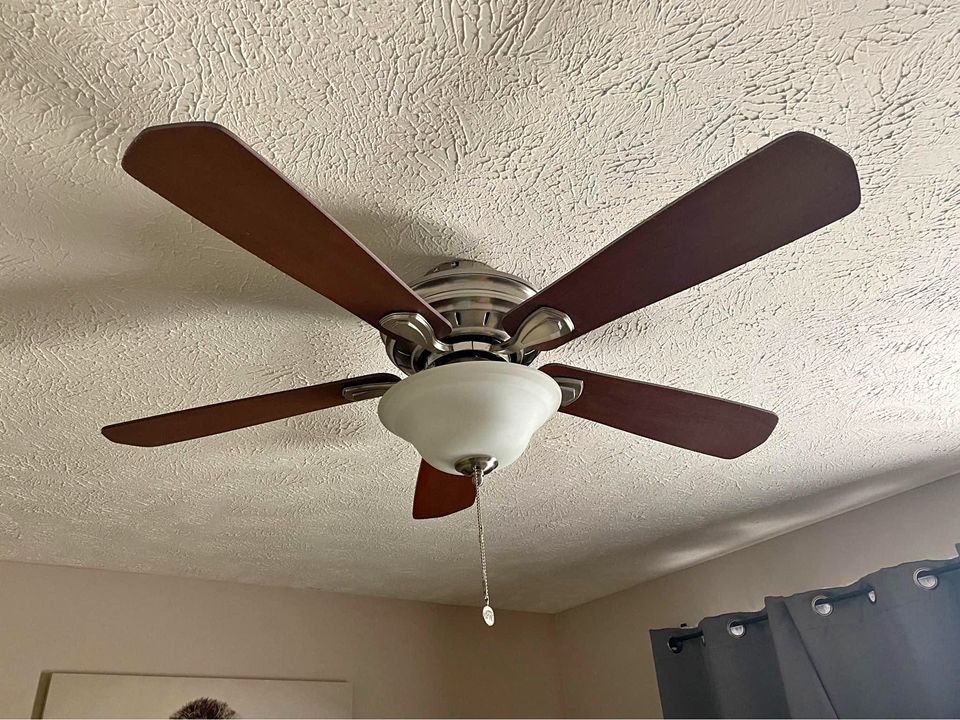
Understanding Ceiling Fan Direction and Seasonal Impact
Impact on Room Temperature
Adjusting the ceiling fan direction in winter can have a significant impact on room temperature. When the fan rotates clockwise, it creates an updraft that pushes warm air down from the ceiling, helping to distribute heat more evenly. This can make the room feel warmer and reduce the reliance on heating systems, ultimately leading to energy savings.
In contrast, during summer months, setting the fan to rotate counterclockwise creates a breeze that provides a cooling effect by circulating air throughout the room. This helps create a wind-chill effect that makes occupants feel cooler without actually lowering the temperature of the space. Understanding and utilizing this seasonal adjustment can contribute to maintaining comfortable indoor conditions year-round.
Effect on Seasonal Comfort
The effect of adjusting ceiling fan direction goes beyond just temperature regulation; it also impacts overall comfort levels within a living space. By optimizing fan direction based on seasonal needs, individuals can enhance their comfort while reducing energy consumption and associated costs.
For example:
In winter, reversing your ceiling fan’s rotation could allow you to lower your thermostat by a few degrees without sacrificing warmth.
During summer, having your ceiling fan set correctly may enable you to rely less on air conditioning while still feeling cool and comfortable.
Determining the Correct Ceiling Fan Direction for Winter
Importance of Changing Ceiling Fan Direction for Winter
Changing the ceiling fan direction in winter is crucial because it helps to distribute warm air more evenly throughout the room. When the fan rotates clockwise at a low speed, it creates an updraft that pushes warm air trapped near the ceiling down into the living space. This can make your room feel warmer without having to rely solely on your heating system, potentially saving you money on energy bills.
Changing the ceiling fan direction to clockwise during winter also helps prevent cold drafts by circulating and mixing air rather than creating a direct breeze. This can reduce cold spots in your home and create a more comfortable environment during colder months.
Impact of Clockwise Fan Rotation on Winter Warmth
When a ceiling fan operates in reverse (clockwise) during winter, it gently redirects rising warm air downwards, effectively creating a cozy atmosphere in your living area. By running your ceiling fan in this manner, you can set your thermostat lower without sacrificing comfort while still keeping energy costs down.
Moreover, maintaining a consistent temperature throughout the room reduces strain on your heating system as well as minimizes heat loss through windows and doors.
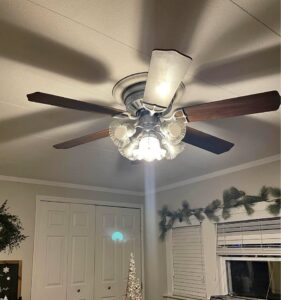
Step-by-Step Guide to Changing Your Ceiling Fan Direction
Simple Steps
To change the ceiling fan direction for winter, locate the reverse switch on the motor housing. Use a ladder if needed. Flip the switch to alter the way your blades spin, ensuring they move clockwise.
Changing the direction of your ceiling fan can also be done using a pull chain or a toggle switch, depending on your fan model. Simply pull or toggle to adjust it from summer mode (counter-clockwise) to winter mode (clockwise).
Safety Precautions
When altering the rotation of your ceiling fan, always ensure that it is turned off and has come to a complete stop before making any adjustments. This prevents accidents and keeps you safe from getting injured by moving blades.
Remember that changing the direction of your ceiling fan doesn’t require any special tools; however, if you’re using a handheld remote to control your fan, make sure that it’s within reach so you can easily turn it on again after adjusting its direction.
Optimizing Ceiling Fan Performance for Winter Comfort
Adjusting Fan Speed
During winter, adjusting your ceiling fan speed can significantly impact your comfort. Running the fan at a low speed helps to circulate warm air without creating a noticeable cool breeze. This gentle airflow prevents hot air from rising and accumulating near the ceiling, ensuring that warmth is evenly distributed throughout the room.
In addition to adjusting the speed, you can also optimize your ceiling fan’s performance by paying attention to its direction.
Correct Fan Direction
To maximize warmth during winter, it’s crucial to set your ceiling fan to rotate clockwise. When running in this direction at a low speed, the fan gently pushes warm air down from the ceiling towards the floor. This simple adjustment aids in combating the wind chill effect, making you feel warmer without having to increase heating costs or rely heavily on your furnace or heating system.
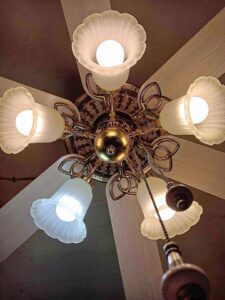
Adjusting Ceiling Fan Settings for Different Room Types
Tailoring for Room Sizes
Ceiling fan direction in winter should be adjusted based on the size of the room. In smaller rooms, such as bedrooms or home offices, setting the fan to rotate clockwise helps circulate warm air trapped near the ceiling. For larger spaces like living rooms or open-concept areas, running the fan counterclockwise can create a gentle updraft and push warm air down.
It’s essential to consider that different parts of your home may require varying settings for optimal comfort during colder months. For instance, a small empty room might benefit from a clockwise rotation to distribute heat evenly, while an open-concept area with multiple functions may need different settings based on its use at any given time.
Adapting Based on Function
In addition to room size, adjusting ceiling fan direction in winter also depends on the function of each space. Bedrooms typically require a cozy and warm atmosphere; therefore, setting the fan blades to rotate clockwise ensures that heat is distributed evenly without creating drafts that could disrupt sleep.
For other functional spaces like kitchens and dining areas where people tend to gather and move around frequently, using ceiling fans set counterclockwise can help maintain comfortable temperatures by keeping air circulating without creating chilly spots.
Maximizing Energy Efficiency with Proper Ceiling Fan Use
Energy Consumption Reduction
Proper ceiling fan direction in winter can actually reduce energy consumption. When the fan blades rotate clockwise at a low speed, they gently push warm air down from the ceiling, creating a more even temperature throughout the room. This means your heating system doesn’t have to work as hard to maintain a comfortable environment, leading to lower energy usage and reduced utility bills.
Utilizing ceiling fans effectively during winter can lead to significant cost savings. By running your fan in reverse (clockwise) on a low setting, you can improve air movement and circulation without causing any cooling effect. This allows you to set your thermostat lower while still feeling just as comfortable, resulting in potential energy savings of up to 15% on heating costs.
Impact on Energy Efficiency
The correct fan direction is crucial for maximizing energy efficiency during winter months. Many people are unaware that by simply adjusting their ceiling fans’ settings, they can create a warmer indoor environment using less energy. The reason behind this lies in the ability of properly set fans to redistribute warm air accumulated near the ceiling downward into living spaces.
You may be interested in this article: How to Take Your Mobile Home Off the Grid
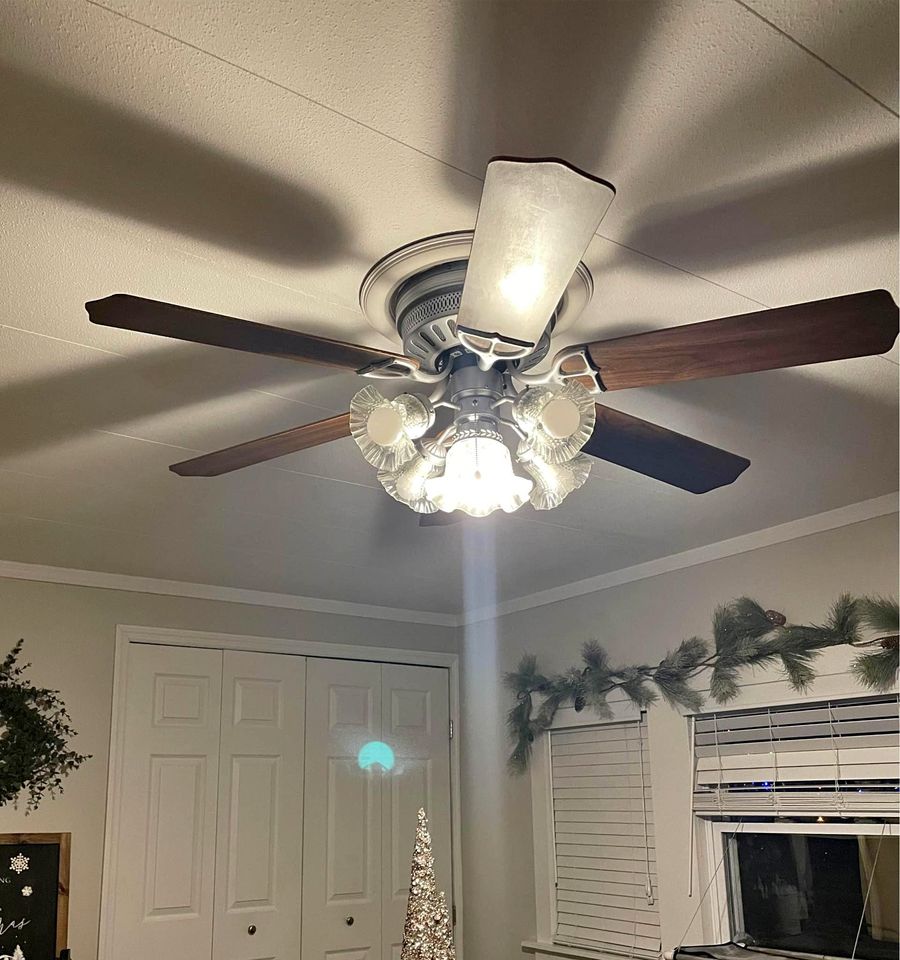
The Benefits of Ceiling Fans in Winter for High Ceilings
Advantages of Ceiling Fans in Winter
Ceiling fans can be incredibly beneficial for maintaining a comfortable temperature in high-ceilinged spaces during winter. By reversing the direction of the fan blades, warm air that naturally rises to the ceiling is pushed back down, helping to evenly distribute heat throughout the room. This simple adjustment can make a significant difference in how warm and cozy the space feels.
During winter, using ceiling fans on low speed helps eliminate cold spots and prevents warm air from collecting near the ceiling. The gentle circulation of air also reduces condensation on windows and walls, making it easier to maintain an ideal level of warmth.
Overcoming Heating Challenges
In rooms with vaulted ceilings, heating challenges often arise due to the tendency for warm air to accumulate at the top while cooler air lingers below. However, by leveraging ceiling fans, this issue can be effectively addressed. The reverse setting on a ceiling fan allows it to gently push warmer air downward without creating a noticeable draft or chill effect.
To optimize comfort further, homeowners can strategically place their furniture and other items under where cool airflow occurs when using a ceiling fan during winter months. This ensures that individuals benefit from both improved warmth distribution and reduced energy costs.
Seasonal Ceiling Fan Direction Tips for Year-Round Comfort
Importance of Fan Direction Adjustment
Maintaining the correct ceiling fan direction is crucial for year-round comfort. During summer, setting your fan to spin counterclockwise creates a cool breeze that helps lower the perceived temperature in the room. In winter, switching the rotation to clockwise produces an updraft, which pushes warm air down from the ceiling and circulates it around the room.
Adjusting fan direction according to seasonal changes can significantly impact energy efficiency and comfort levels. By utilizing your ceiling fan effectively, you can reduce reliance on central air or heating systems, leading to potential cost savings while maintaining a comfortable indoor environment.
Seamless Transition Tips
Transitioning between summer and winter fan directions is simple. Most modern fans feature a switch on their motor housing that allows you to change the rotation direction easily. If your fan doesn’t have this feature, use a remote control or wall-mounted control panel if available.
To ensure seamless transitions throughout the year, consider using labeled reminders near your fan’s switch or controls as handy prompts when adjusting its rotation seasonally. For example: “Clockwise for Winter” and “Counterclockwise for Summer.
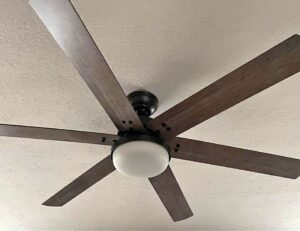
Final Remarks
You’ve now mastered the art of optimizing your ceiling fan for winter comfort. By understanding the impact of ceiling fan direction on seasonal comfort, learning how to adjust the settings, and maximizing energy efficiency, you’re well-equipped to create a cozy environment during the colder months. Whether it’s for high ceilings or different room types, these tips ensure that your ceiling fan becomes a valuable ally in maintaining a comfortable atmosphere while saving on energy costs. Now, go ahead and put these insights into action to enjoy a warm and inviting space all winter long!
Frequently Asked Questions
What is the impact of ceiling fan direction in winter?
Changing your ceiling fan’s direction in winter can help distribute warm air more evenly, making rooms feel cozier. By running your fan clockwise at a low speed, you can gently push warm air down from the ceiling to maintain comfort without increasing heating costs.
How do I determine the correct ceiling fan direction for winter?
To set your fan for winter, stand beneath it and observe if you feel a gentle breeze. If not, adjust the switch on the motor housing to change its rotation to clockwise. This will ensure that warm air is circulated downward without creating a draft.
Can you provide a step-by-step guide for changing my ceiling fan direction?
Firstly, turn off your fan and allow it to come to a complete stop. Then locate the small switch on the motor housing near the base of the blades and adjust it in the opposite position. Once done, turn on your fan again and enjoy improved warmth distribution.
How can I optimize my ceiling fan performance for winter comfort?
In addition to adjusting its direction, consider operating your ceiling fans at low speeds during winter months. This will create a gentle updraft which pushes warm air accumulated near ceilings downwards while minimizing any cooling effect from increased airflow.
Are there specific tips for seasonal changes in ceiling fan direction throughout the year?
For summer cooling, set your fans counterclockwise at higher speeds to create a wind-chill effect. In spring or fall when temperatures fluctuate, use fans sparingly or run them at low speeds as needed. Adapting their settings according to each season ensures maximum comfort.
You might also be interested in our articles:
Mobile Home Blue Book: Understanding Value & Maximizing Returns
Sell a Home Without a Realtor: Ultimate Guide to DIY Selling

